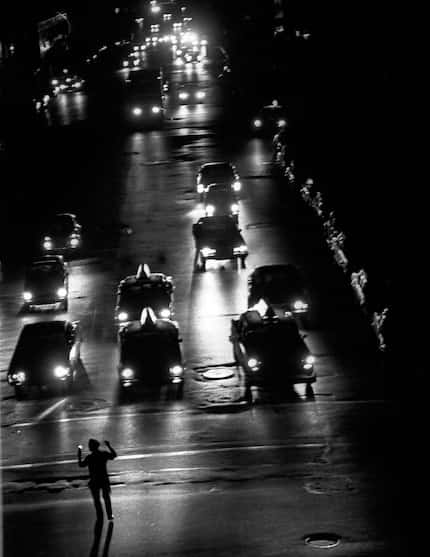The 1977 New York City blackout has morphed in our minds from a power outage to a symbol of everything that made the Big Apple rotten in the 1970s. The crime, the heat, the filth, the empty city coffers, the political dysfunction: It all descended into darkness the night of July 13, exposing gaping social class chasms from the start.
That night falls under the spotlight Tuesday with Blackout, the latest installment in PBS' mighty American Experience documentary series. If you seek a more imaginative take, Garth Risk Hallberg's behemoth debut novel City on Fire, which culminates with the blackout, arrives in October. There's also Jonathan Mahler's fine 2006 nonfiction book Ladies and Gentlemen, the Bronx Is Burning, which combines the blackout with a different kind of combustible force, the 1977 Yankees.
Mahler is among the many talking heads bearing witness in Blackout, a roster that also includes firefighters, police, residents, looting victims, journalists and the former chief system officer for Con Edison. Con Ed was the first line of defense against the chaos. Lightning struck a power line at a substation along the Hudson River around 8:30 p.m. A couple more bolts followed; system overloads and attempts to drop customers ensued. By 9:27 p.m., power was out in all five boroughs.

Blackout shines brightest as it explores the surreal paradoxes the power outage exposed. Kevin Zraly, who was wine steward at Windows on the World restaurant atop One World Trade Center, remembers the general manager placating the high-end diners with free champagne. (He also let them take off their mandated coats and ties.) Meanwhile, in less fortunate precincts, the looting was on.
The documentary doesn't sugarcoat the destruction that went down that night. First, criminals broke shop windows and helped themselves to everything from disposable diapers to furniture. Then other residents streamed in to get theirs. Small businesses were engulfed in flames. By the time it was done, 3,400 people had been arrested and hundreds of millions of dollars in property damage had been incurred.
To its credit, Blackout acknowledges that such crimes aren't committed in a vacuum. The social divides in '70s New York were particularly pernicious, about as wide as the distance between Windows on the World and the Bronx. Just two years prior, in 1975, unemployment in New York climbed to 12 percent. Social services were cut left and right.
The blackout looting is a sad story like many others: Those without power - the socioeconomic kind, not the electrical kind - turn on one another because there's no one else to turn on.
The heart of the film lies in the sense that, as one talking head puts it, there was "something existentially, foundationally wrong with New York." Mahler's The Bronx Is Burning includes an epigraph from Saul Bellow's novel Mr. Sammler's Planet, published in 1970: "New York makes one think about the collapse of civilization, about Sodom and Gomorrah, the end of the world. The end wouldn't come as a surprise here. Many people already bank on it."
Years later, in 2013, the city was congratulated for its conviviality in the face of another power outage. New York was cleaner and safer by then, and arguably more boring. Blackout is a time capsule of sorts, a trip back to New York before its gentrification as a rich person's playground.
It's also a reminder that, when the lights go out, you can see some pretty scary things.


/cloudfront-us-east-1.images.arcpublishing.com/dmn/CYCED6UYIJA3ZBD7OJ6PR27SIU.jpg)
/cloudfront-us-east-1.images.arcpublishing.com/dmn/F5S2YSWWSFDL5ETVPWMAR4IIMM.jpg)
/cloudfront-us-east-1.images.arcpublishing.com/dmn/XVPEQJX4SRGT7OSHUVAKN5FFGQ.jpg)
:no_upscale()/cloudfront-us-east-1.images.arcpublishing.com/dmn/FVNFZF773ZGBBIMFHTQJFFNT2Y.jpg)
/cloudfront-us-east-1.images.arcpublishing.com/dmn/D4FJ726DTR6SREKVO4SCKYKNEE.jpg)